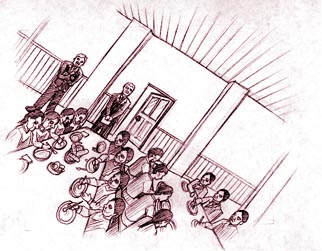without educating the females was pointless. For example, part of Mississauga missionary Peter Jones's Appeal for funds in 1835 had been the argument that inadequate funds prevented the Methodists from providing girls with 'proper instruction in work ... and other domestic duties,' with the result that 'when they leave the schools and become parents themselves [girls] are very little prepared to take care of a family than their parents were.' Educated young women ensured that 'their children would be educated also and brought up as christians [sic].' Educating boys who would marry unschooled and unevangelized girls would ensure reversion to 'heathen' ways. 'It will be nearly futile to educate the boys and leave the girls uneducated.' The prime minister [of the day] agreed. The schools had not been in operation much more than a year when he conceded that educating girls was 'of as much importance as a factor in the civilisation and advancement of the Indian race, as the education of the male portion of the community.'
However, if the schools were to be coeducational,
they would be so only within the narrow limits of a strict definition of that
word. One of the most marked features of Canada's residential schools was
their fanatical segregation of female and male students. As the deputy minster
of Indian Affairs had put it in 1895, the department was opposed to having
boys and girls in the same institution unless separate buildings were provided
'or by some other perfect arrangement they can be kept from the possibility
of 


